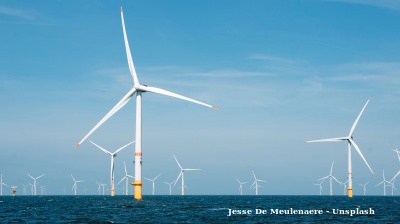India’s ambitious smart metering programme is gathering pace as state-owned distribution companies (DISCOMs) and private partners ramp up deployments across the country. The government’s Revamped Distribution Sector Scheme (RDSS), launched to address chronic inefficiencies and financial stress in the power sector, has placed smart meters at the heart of its reform agenda.
Under the RDSS, DISCOMs are expected to install prepaid smart meters for all consumers, as well as at feeder and distribution transformer levels, to enable automatic energy accounting and auditing. This transition is designed to improve billing efficiency, reduce Aggregate Technical & Commercial (AT&C) losses, and enhance consumer transparency.
According to a note presented in the Indian Parliament in December 2023, the scheme is structured under a public-private partnership (PPP) model, with financing designed to minimise immediate burden on DISCOMs. Rather than paying upfront capital costs, DISCOMs engage Advanced Metering Infrastructure Service Providers (AMISPs) on a TOTEX (total expenditure) model. Under this arrangement, AMISPs finance, install, operate, and maintain the meters, receiving payments over a 7–10 year period based on performance metrics.
This structure ensures accountability throughout the lifecycle of the meters while helping cash-strapped DISCOMs avoid upfront investments that would otherwise exacerbate their financial constraints. The government has also prioritised the installation of meters for government departments to ensure timely payments and improve revenue collection efficiency.
Smart meters are expected to provide two-way communication capabilities, allowing real-time monitoring of consumption patterns. By enabling accurate load forecasting and better power procurement planning, these meters are seen as critical to addressing long-standing distribution challenges.
Despite a slow start since the launch of the Smart Meter National Programme (SMNP) in 2017, momentum is picking up.
Crisil Ratings, in its latest industry analysis published in last week of June 2025, projected around 20% revenue growth for smart electric meter manufacturers in FY2026, taking the segment’s overall turnover to nearly INR90bn ($1.05bn). Improved margins from advanced technology meters and better capacity utilisation are expected to drive operating profitability up by 75–80 basis points to about 13% during the same period.
The market, estimated at INR900bn under the SMNP, has long promised opportunities, but supply chain constraints and procedural delays slowed progress in its initial years. Crisil notes that recent improvements, including the resolution of semiconductor shortages and the introduction of stricter import norms requiring Bureau of Indian Standards (BIS)-certified meters, are helping to unlock latent demand.
Additionally, the establishment of direct debit facilities for AMISPs is expected to smoothen payment cycles and increase confidence among service providers. Despite these advances, Crisil expects working capital requirements to rise by 25–30% due to higher order volumes and longer cash conversion cycles, which are estimated at around 170–180 days.
Nevertheless, manufacturers are likely to maintain stable credit profiles, thanks to robust balance sheets and strong cash flows. Crisil projects gearing levels to remain moderate at 0.50–0.55 times, while interest coverage ratios are expected to stay healthy in the range of 3-4 times over the next two years.
In anticipation of surging demand, several manufacturers have already expanded capacities, reducing the need for significant new debt-funded capital expenditure. While potential delays in payments from AMISPs pose a risk, especially if performance-linked milestones are missed, industry analysts believe that most players are now better prepared to navigate such challenges.
Beyond financial and operational improvements, the widespread adoption of smart meters is also expected to encourage energy conservation among consumers. Prepaid meters, in particular, allow households to monitor usage closely, helping them manage bills and avoid unexpected charges. DISCOMs, meanwhile, benefit from improved revenue realisation and reduced collection costs.
The move towards smart metering aligns with India’s broader push for digitalisation and data-driven governance in the power sector. Enhanced data analytics will support policy decisions, facilitate demand-side management, and help integrate renewable energy sources more efficiently.
Experts believe that the successful rollout of smart meters could become a turning point for the Indian power distribution landscape, which has long suffered from operational inefficiencies and financial losses. States such as Uttar Pradesh, Bihar, and Haryana—historically among the highest loss-making regions—stand to benefit significantly from the improved accuracy and transparency offered by smart metering.
As India moves closer to its target of replacing 250mn conventional meters with prepaid smart meters, manufacturers and service providers are preparing for what could become one of the world’s largest metering rollouts. The combination of supportive policy frameworks, technological advances, and increasing consumer awareness is set to reshape how power is consumed and managed across the country.
While challenges remain—including procedural bottlenecks, funding delays, and regional variations in readiness—the overall sentiment is one of cautious optimism. The next few years will be crucial in determining whether India can deliver on its ambitious goals and truly transform its power distribution ecosystem.
bneGREEN

China’s emissions growth flat as emissions peak arrives
China’s carbon dioxide emissions remained flat in the third quarter of 2025 compared to a year earlier, extending a trend of stabilisation that began in March 2024.

China unveils world’s first thorium-powered container ship
China has launched the world’s first container ship powered by a thorium molten salt reactor (TMSR), marking a potential milestone in nuclear maritime propulsion and low-emission shipping technologies.

UNDP warns climate change will slash crop yields in low-income countries
A new United Nations dataset shows median national crop yields will decline by around 25-30% by the end of the century under very high emissions scenario.
_(1)_1763129824.jpg)
UK judge holds BHP liable in Brazil dam collapse case
A High Court judge in London has ruled that BHP Group is legally responsible for the 2015 collapse of a tailings dam in Brazil, the country’s most serious environmental disaster.




